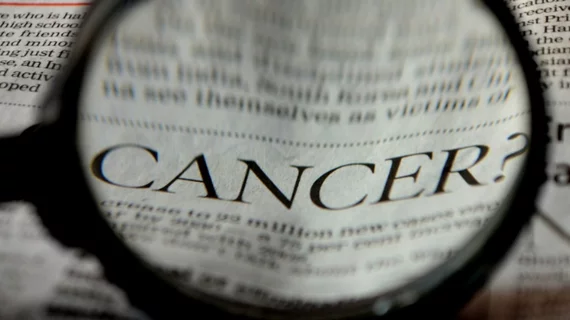Ultrasound a smart first choice for patients with palpable lumps after a mastectomy
Providers should turn to ultrasound first, not mammography, when imaging palpable lumps after a mastectomy, according to new findings published in the American Journal of Roentgenology.
“After a mastectomy, a primary or recurrent breast cancer often presents as a palpable lump, either detected by the patient or found at clinical breast examination,” wrote lead author Brittany Z. Dashevsky, MD, University of California, San Francisco, and colleagues. “Mammography may be technically challenging or simply not feasible after mastectomy in the absence of autologous breast reconstruction.”
The authors explored data from more than 100 patients who presented for palpable lumps after a mastectomy from January 2009 to December 2015. Patients were all treated at a single academic breast imaging center. The mean patient age was 52 years old. The median time from mastectomy to presenting for the palpable lump was 2.6 years.
All 118 cases included in the study were examined using ultrasound, and 43 were imaged with both ultrasound and mammography. Of the 75 cases evaluated exclusively with ultrasound, nine cancers were detected. Of the 43 cancers evaluated with both modalities, three cancers were detected through ultrasound—two of those were visible on the patient’s mammogram and the third was not.
Overall, 14 malignant palpable lumps were identified in 12 patients. The other 104 palpable lumps from 89 patients were nonmalignant. Targeted ultrasound has a negative predictive value (NPV) of 96%, sensitivity of 86%, and a positive predictive value 2 (PPV2)—defined as “the percentage of diagnostic examinations recommended for biopsy”—of 27%.
“Our data suggest that ultrasound, with its high NPV, is the initial modality of choice,” Dashevsky and colleagues wrote.
Mammography did not find any additional cancers not also identified by ultrasound—but the authors said it did provide some value as a “problem-solving” tool.
“Although mammography yielded no additional cancers, it was useful in some cases to confirm characteristically benign mammographic findings such as fat necrosis and dystrophic calcifications,” the authors wrote. “Mammography detected pleomorphic calcifications associated with one malignant mass initially identified on ultrasound, which better informed extent of disease.”

